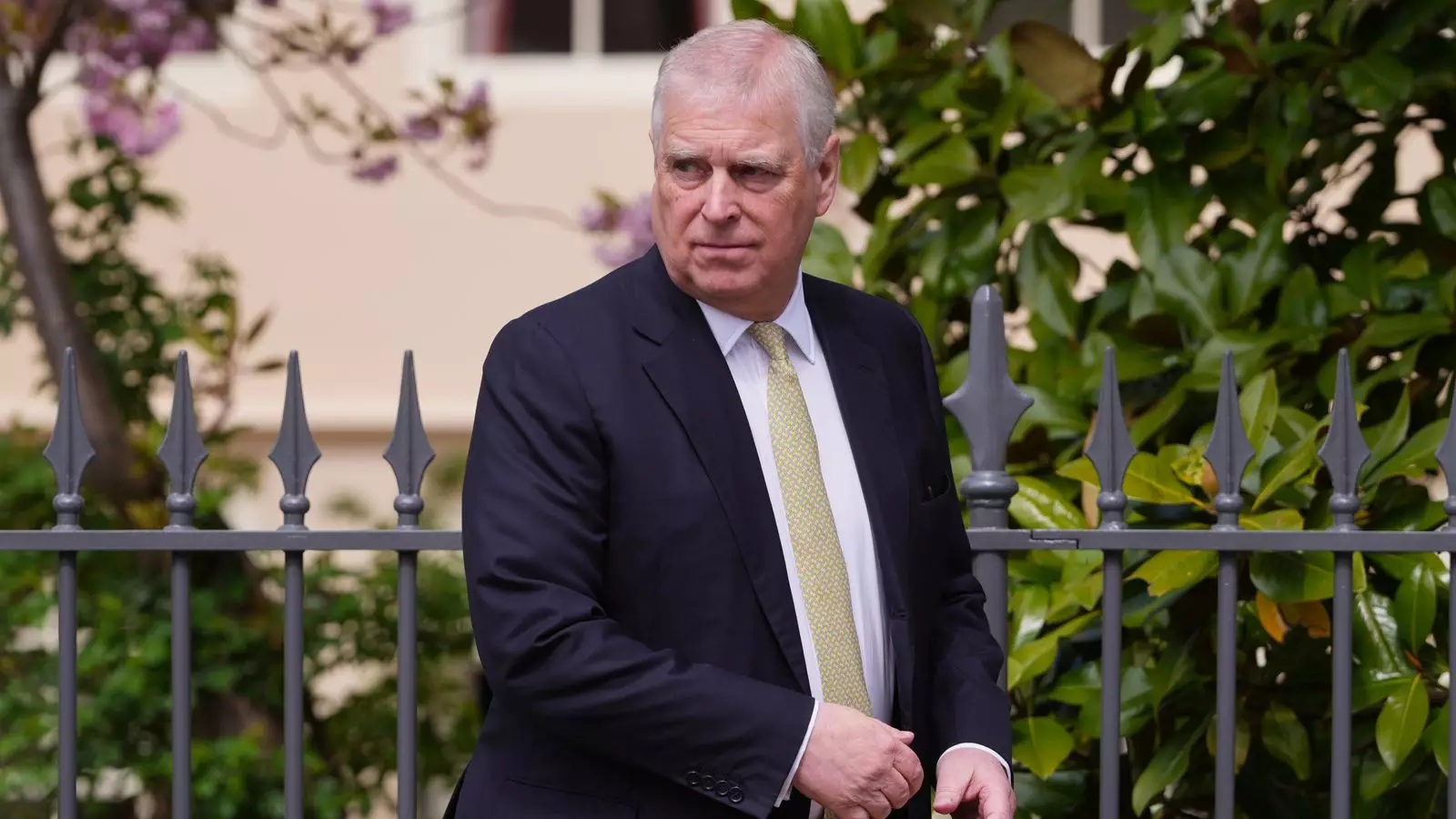This year’s Easter Sunday service at Windsor was not just a routine gathering of the royal family but a stage illuminated by a striking juxtaposition of tradition and controversy. The presence of Prince Andrew, the Duke of York, raises eyebrows and questions about the royal family’s handling of its past transgressions and current image. Faced with a legacy marred by scandal, Andrew’s participation appears not just as a family reunion but as a subtle defiance against a narrative that has sought to minimize his involvement in royal duties.
Traditionally, Easter is a time for renewal and redemption, a chance for the monarchy to present a united front to the public. However, when Andrew exited the chapel, the echoes of his troubled history reverberated through the gathered crowd, overshadowing the day’s intentions. It wasn’t just a gathering for prayer; it became a symbol of how the royal family attempts to navigate public opinion amidst a backdrop of serious allegations and societal change.
Absentee Royals and Family Dynamics
Notably absent from the Easter festivities were Prince William and the Duchess of Cambridge, who opted for a quiet day with their children instead of partaking in royal protocol. This decision reflects the modern sensibilities of the younger royals, who seem to favor family unity and private time over the archaic responsibilities of public appearances. It highlights a generational shift within the monarchy that persists in grappling with its dual role as a protector of tradition and a reflection of contemporary society.
William and Kate’s choice to prioritize their children sends a poignant message that resonates with many in today’s world—one that seeks balance between duty and family, even when it doesn’t fit neatly into royal expectations. Their absence, contrasted with Andrew’s unexpected appearance, raises questions about the evolving narrative of the royal family. Are they aligning themselves with modern values, or are they merely tethering themselves to a past that is hard to shake?
Scandals That Haunt the Family
Meanwhile, Prince Andrew’s participation in royal events continues to be a precarious balancing act, made even more tumultuous by his well-publicized links to various controversies. Since taking a step back from royal duties after his disastrous interview with BBC’s Newsnight in 2019, he has largely avoided the public eye—except for these occasional appearances that remind us that the scandal remains largely unresolved.
His attendance at significant events raises more questions than it answers, particularly when juxtaposed with the troubling history of the royal family and their relationships with problematic figures. The monarchy has long been seen as a bastion of tradition and stability, yet the presence of Andrew serves as a stark reminder of the shadows that lurk behind its gilded surface.
What does it mean for a family steeped in history to welcome back a member whose reputation continues to falter under the weight of accusations? It seems a disservice to the very ideals they purport to uphold, creating a tension that challenges public perception of the royal family as a moral touchstone.
The Weight of Expectations and Messages of Hope
This Easter service not only served as Andrew’s return but also as an opportunity for King Charles to reinforce his messages of faith, hope, and love—ideals that starkly contrast with aspects of his family’s current narrative. The King’s health and his recent reflections on kindness amidst cruelty embody a push towards positivity that is desperately needed in the monarchy’s public relations. However, his struggles with cancer add a layer of poignancy to his Easter message while also heightening the urgency for the royal family to redefine their legacy in a post-scandal world.
The choice of Archbishop Stephen Cottrell to deliver the Easter sermon—amidst his own controversy regarding historical abuse cases—serves as another reminder of the broader systemic issues at play, influencing how we perceive authority and governance. As the royal family battles internal strife and public scrutiny, it becomes crucial to remember that their image is not just about maintaining tradition; it also involves facing unresolved issues head-on.
The royal family finds itself at a critical juncture. The convergence of tradition, family dynamics, and scandal will continue to shape its narrative, demanding more than just symbolic participation in long-held customs. In a world that increasingly values transparency, the royals must navigate these waters carefully, ensuring that their actions reflect the principles of morality they profess to champion.


Leave a Reply